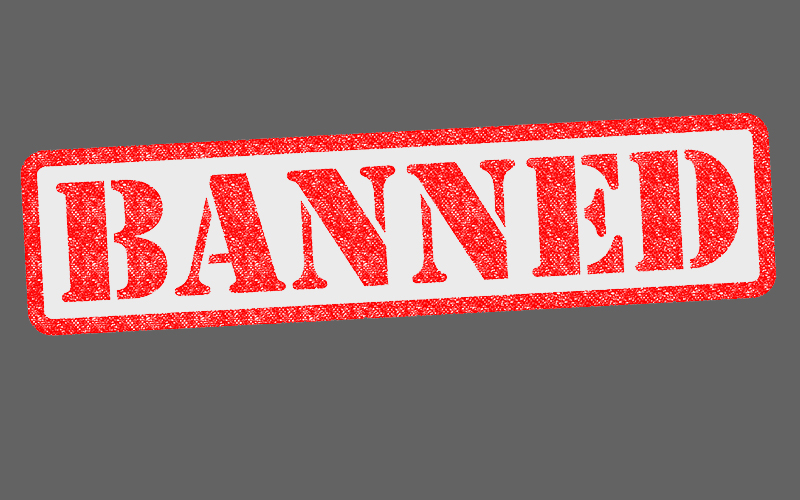Over the past several years–and still ongoing–a number of states have started to ban cosmetic ingredients and any cosmetics containing those ingredients.
Many of the state bills are entitled “Safe Cosmetic Act” or the “Toxic-Free Cosmetic Act” and have exactly (or nearly) the same text seeking to ban the same ingredients. There is definitely a “movement” happening, with a strong group of people pushing for additional legislation at the state level.
Even so, the bills don’t automatically pass. There are a number of states with bills that were introduced and subsequently failed. No doubt there will be legislators in those states that re-introduce the bills and try again.
I’ve spent much of the last several days researching which states have already passed laws, and which states have laws currently proposed but not yet passed.
Cosmetic Chemicals with Current or Proposed Bans
The chart below shows where things stand.
A few comments about how it’s put together: Some of the laws ban specific chemicals, and some ban groups of similar chemicals. I’ve tried to be as detailed as possible without having a super-long list. In a few cases the chemical isn’t banned completely but has a maximum allowed amount (usually in the parts-per-million range). See the footnotes for each state for links to the actual statutes and proposed bills.
Bottom line, though, is that if you think you MIGHT be using one of these chemicals, check the law to get the exact details.
Note: I only started adding in the bans of animal testing as I noticed that there were several states that have already prohibited animal testing on cosmetic products and ingredients. There are probably additional states that already ban animal tested cosmetics, and more with legislation pending.

Banned

Ban Proposed, but not yet passed
| Ingredient | USA | CA1 | CO2 | HI3 | IL4 | MD5 | ME6 | MA7 | MN8 | NH9 | NY10 | OR11 | VT12 | WA13 | WI14 |
|---|---|---|---|---|---|---|---|---|---|---|---|---|---|---|---|
| Animal Testing | |||||||||||||||
| 1, 4-dioxane | |||||||||||||||
| 2-Chloracetamide | |||||||||||||||
| Acetaldehyde | |||||||||||||||
| Allyl isothiocyanate | |||||||||||||||
| Anthraquinone | |||||||||||||||
| Arsenic | |||||||||||||||
| Asbestos (generally) | |||||||||||||||
| Benzene | |||||||||||||||
| Benzophenones (generally) | |||||||||||||||
| Bithionol | |||||||||||||||
| Boric acid (and borate compounds) | |||||||||||||||
| Butylated compounds (generally) | |||||||||||||||
| Cadmium compounds (generally) | |||||||||||||||
| Ingredient | USA | CA | CO | HI | IL | MD | ME | MA | MN | NH | NY | OR | VT | WA | WI |
| Carbon Black | |||||||||||||||
| Chromium | |||||||||||||||
| Cyclohexylamine | |||||||||||||||
| Diethanolamine | |||||||||||||||
| Ethylene oxide | |||||||||||||||
| Formaldehyde (generally) | |||||||||||||||
| Lead (generally) | |||||||||||||||
| Laurus nobilis (Bay Laurel) seed oil | |||||||||||||||
| Lily aldehyde | |||||||||||||||
| Malachite green | |||||||||||||||
| Mercury & Mercury compounds | |||||||||||||||
| Methylene chloride | |||||||||||||||
| Methylene glycol | |||||||||||||||
| m-Phenyylenediamine | |||||||||||||||
| Ingredient | USA | CA | CO | HI | IL | MD | ME | MA | MN | NH | NY | OR | VT | WA | WI |
| Napthalene | |||||||||||||||
| Nickel | |||||||||||||||
| Nonylphenol | |||||||||||||||
| o-Phenylenediamine | |||||||||||||||
| Parabens (generally) | |||||||||||||||
| —- Butylparaben | |||||||||||||||
| —- Ethylparaben | |||||||||||||||
| —- Isobutylparaben | |||||||||||||||
| —- Isopropylparaben | |||||||||||||||
| —- Propylparaben | |||||||||||||||
| Perfluoroalkyl and polyfluoroalkyl substances (generally) |
|||||||||||||||
| Ingredient | USA | CA | CO | HI | IL | MD | ME | MA | MN | NH | NY | OR | VT | WA | WI |
| Phthalates (generally) | |||||||||||||||
| —- dibutyl phthalate | |||||||||||||||
| —- Dicyclohexyl phthalate | |||||||||||||||
| —- Diethylhexyl phthalate | |||||||||||||||
| —- Ortho-phthalates | |||||||||||||||
| Phytonadione | |||||||||||||||
| Pyrogallol | |||||||||||||||
| Quaternium-15 | |||||||||||||||
| Siloxanes (generally) | |||||||||||||||
| Styrene | |||||||||||||||
| Talc | |||||||||||||||
| Tetraboron disodium heptaoxide | |||||||||||||||
| Toluene | |||||||||||||||
| Trichloroacetic acid | |||||||||||||||
| Triclocarban | |||||||||||||||
| Triclosan | |||||||||||||||
| Tricresyl phosphate | |||||||||||||||
| Trisodium nitrilotriacetate | |||||||||||||||
| Vinyl acetate | |||||||||||||||
| Xylene |
The Good News
The good news is that most small businesses and handcrafters don’t use these ingredients in their cosmetics.
The only parabens that have been banned (and not banned everywhere) are isopropylparaben and isobutylparaben, both of which have been being phased out for years and are no longer used in the more common preservatives.
Talc has been an ingredient of interest for some time. Only Massachusetts has a proposed ban on talc. The FDA has been researching talc and is required to propose testing prcedures for cosmetics that use talc to ensure that they aren’t contaminated with asbestos.
Triclosan was widely used as an antibacterial in soaps of all kinds (especially synthetic soaps for medical workers). It was already disapproved by the FDA as an antibacterial several years ago because it was causing resistant strains of bacteria.
Arsenic, lead, mercury, nickel and cadmium, along with other heavy metals, are rarely found in cosmetics, and then only because they have contaminated some cosmetic ingredient.
Of all these ingredients, the only one that I ever used was borax (now banned as one of the borates) as part of a “natural” emulsification for my original body butter over 25 years ago. I discovered quite fast that tthere were much better, safer, more stable, and easier emulsifiers available!
So, when you hear that “Cosmetic ingredients are being banned!” don’t worry! Most of the banned ingredients you wouldn’t use anyway!


Leave a Reply